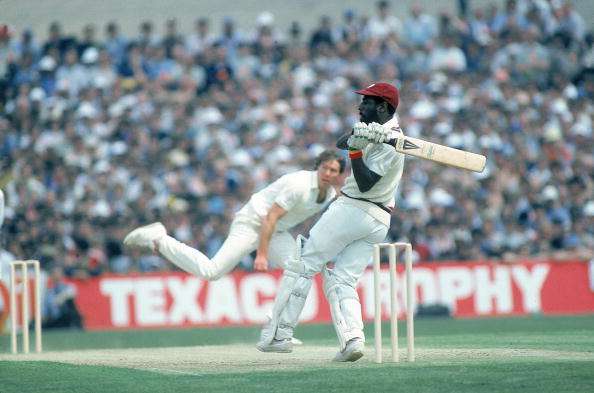To see or not to see, that appears to be the question Alastair Cook has been given no choice to decide in the recent row over the helmet he must wear for batting.
It is the same question Vivian Richards was, thankfully, allowed to answer for himself and the reasons he opted to wear no protective headgear other than his maroon cap of the West Indies, when every other batsman in world cricket was doing so as a matter of routine, are worth recalling.
The first, according to the Master-blaster, was about the kind of message he wanted to convey to his opponents.
Bowl as fast as you like and as short as you like. It will not be short enough or fast enough. How many bowlers, from Dennis Lillee, to Jeff Thomson, to Lennie Pascoe to Imran Khan, discovered to their cost just how futile that exercise actually could be?
And his nakedness at the crease even extended to refusing to wear a mouth guard specially made for him by his dentist, because “it would impede my gum chewing”.
Of the second reason he gave for going into battle armed but without armour, Richards once explained: “It was the pride I felt wearing the cap with the crest on it and what it represented.
“I felt so proud to be given the opportunity to represent my country. The cap represented West Indies and it represented Vivian Richards.”
But, as well as image and status, the choice made by the best batsman of his generation, arguably the best of all time, was just as much about his batting.
“Sheer madness, people told me,” Richards remembered. “They called me total madman, crazy guy … to go out there without a helmet.
“For sure, I knew I could get unlucky.
“But it made me much more aware, watching the ball … knowing that one slight mistake and my number could be up.”
There are those who believe that when Richards talks like this, he is merely exercising the right of all former greats
to be mischievous and make sure everyone understands how much tougher things were in his day. Indeed, rumour has it that while he never actually wore a helmet on the pitch, by the time he had to face England’s Devon Malcolm on
England’s 1989-90 tour to the Caribbean, he did carry one around in his ‘coffin’ just in case.
Little wonder if he had done. As anyone will confirm who faced the gentle giant Jamaican on a day when either his radar was faulty or he had mislaid his contact lenses, you could be in more danger of being crusted by a ball that didn’t bounce as by one that did.
But Richards carried on helmetless, trusting the far more potent defensive weapons of eyes and reflexes sharpened by necessity and experience, and a touch of fear, to get him out of trouble.
“All that King Arthur stuff,” Richards said of the trend for “health and safety”.
“When you cover a young cricketer in all kinds of padding and put him onto a perfectly predictable pitch there is no way he is going to develop the same level of skill.”
And that is the point.
Sadly, cases like the tragic accident that cost Philip Hughes his life in 2014 underline the truth that batting against a hard ball propelled at speeds of 90mph plus carries the ultimate risk.
Without wishing to underplay the awfulness of what happened to the young Australian batsman when that ball hit him on the back of the neck, descriptions of the circumstances have included the terms freakish and one-in-a-million chance.
Furthermore, equipment manufacturers have moved swiftly to add padding to that previously unprotected area to try and reduce the chances of such a catastrophic blow ever being struck again.
Yet, as Cook starts the rest of his career feeling hampered by having to wear a helmet in which the top bar of his fixed grille interferes with his line of sight, it is easy to share his sense of frustration.
Cook is far from alone among international batsmen who have complained of similar problems.
Graham Gooch and Mike Atherton both reported issues and others like David Gower preferred to bat without a grille at all.
The reason the new fixed grilles are shaped the way they are, with a narrower gap between the top bar and the lid of the helmet, is to stop the ball going straight through the gap into the batsman’s face, as it did when Stuart Broad top-edged a ball from India’s Varun Aaron two summers ago, suffering a broken nose, panda eyes and a dent to his confidence from which he has only recently recovered.
But while not out of the question, the fractionally larger gap with which Cook is entirely comfortable is still so narrow that the likelihood of a recurrence would be minimal, certainly not enough to justify forcing batsmen to wear helmets that they believe increase their chances not only of getting out but getting hit – for the simple reason that they just can’t see the ball properly.
Cook understands pros and cons and all the risks. Having weighed them up and from personal experience, he actually believes the new fixed grille makes batting more dangerous, not less.
Sadly for him, however, and, one suspects, mind-bogglingly for Richards, he is being deprived the right to choose.
This piece originally featured in The Cricket Paper, Friday April 22 2016















